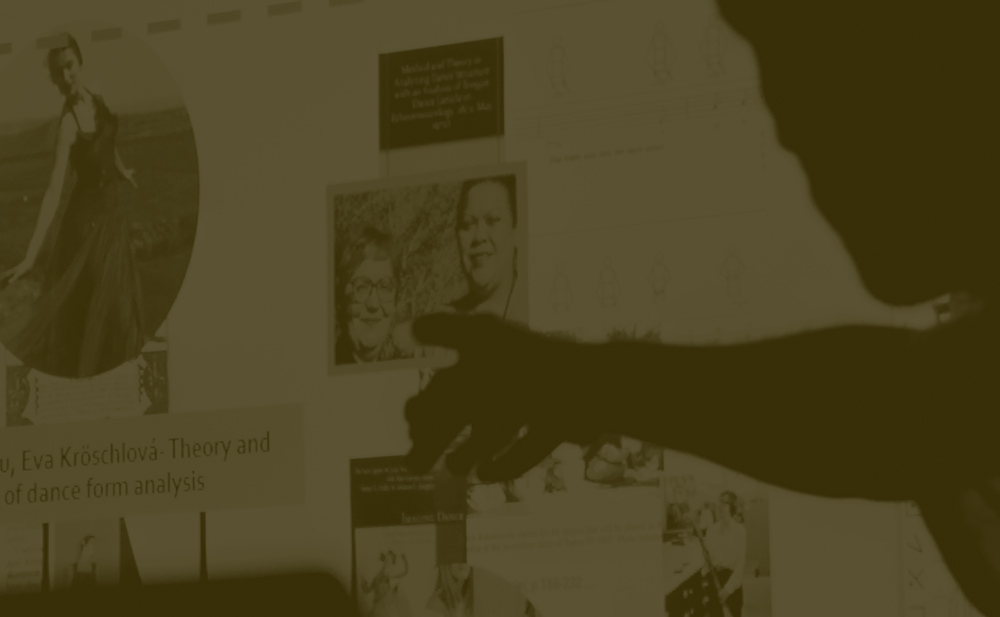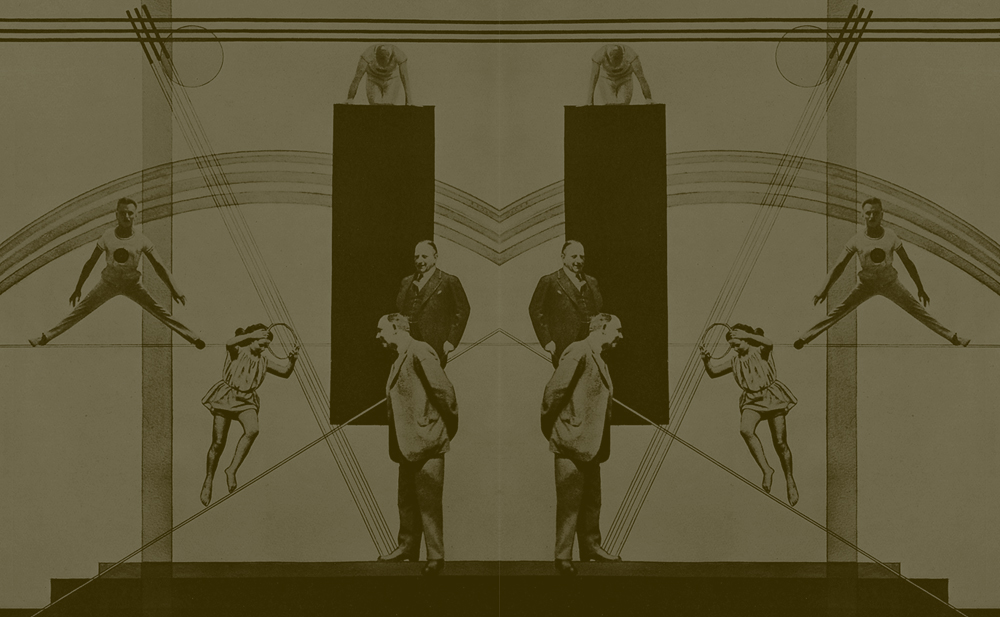
GUEST SPEAKER
Dance Research
Bella Stenvall
Introduction
Hello, my name is Bella.
I am currently in California. I was in Amman in 2019 for a good amount of time.
My background is in research.
I will talk about how research could be beneficial to you in your choreographic process. practice.

My 1st choreography
I am going to talk about dance research, methods, process and scholarship.
I will start with a brief introduction about me.
I started dancing when I was very little. I had very few social skills as a child growing up. I was trained in Hip-hop, contemporary and modern dance, and Salsa, sort of a wide range of styles of dance.
I did not really think about choreographing when I was about sixteen. I thought choreographing was something professional dancers did and I did not think it was something I could do for myself. I thought it was something I would do in my twenties, or when I joined a professional dance company.
I approached the director of the dance studio I was dancing for in California and asked for choreographing a piece for a showcase which was coming up.
So the very first piece I ever choreographed was a 4-minute-piece with 3 dancers.
I modeled the concept of the dynamics of my three sisters. I have two little sisters. My piece was sort of based on our dynamics growing up in a divorced household.
What I learnt from choreographing the first piece is that I love choreographing. I like making things just as much as I like dancing. And it was a very perthitic process, having some of my personal findings, causing me to think a lot more about the things I was trying to grab within my concept.
I felt like I was having a very emotional reaction to making the piece. This made me started think how big dance can make one feel personally, and how dance can really impact communities, and communities’ expression. This experience lit the fire for dance research being something that was interesting for me. Because there were parts of research that I needed, in order to create a piece, even it is something very personal.
Later I took a year off before I went to university, I was living in Spain. I moved to Greece. I was working in a Syrian refugee camp in Athens. That was where I started learning Arabic.
I also started to see dance as a more global form. As I was traveling in South America, parts of Western Europe, and parts of Eastern Europe, and spending a lot of time the Syrian families in the camp that I developed relationships with, I started to think of dance less isolated to its personal meaning, more of a form with a global influence.

Later I took a year off before I went to university, I was living in Spain.
I moved to Greece. I was working in a Syrian refugee camp in Athens. That was where I started learning Arabic.
I also started to see dance as a more global form.
As I was traveling in South America, parts of Western Europe, and parts of Eastern Europe, and spending a lot of time the Syrian families in the camp that I developed relationships with, I started to think of dance less isolated to its personal meaning, more of a form with a global influence.

Introduction of dance search
Then I came to UCLA, to study an Arabic major, and a dance double major. So Arabic and dance are my two majors of study.
I was exposed to a lot of scholarship in dance. There are a lot of intellectuals with a lot of studies that use dance a way to understand the world politically, socially, and economically.
I thought that was cool. Because I had been really interested in dance my whole life as a form of physical practice, as a form of personal expression, and suddenly I was able to see dance and its place in different societies, how it has been used.
It was great in learning about how I could look at a dance, and use it as the primary text to understand a certain community.
So I got dived into the world of dance research.

My visit of Jordan
In September 2019, I came to Jordan. I made a lot friends that were really involved in Hip-hop community. Because that where I have been mainly dancing at the time.
I started an informal research project about what does Hip-hop in Amman tells us politically, socially, economically, what sort of expressions are there, and what can we learn the development of this specific community.
I think we can ask these questions about any dance community of any dance form that resides anywhere. Because my friends are in the Hip-hop circle. That was where my curiosity went.
I took the idea and the informal interviews I did with my friends in Amman back to campus. I found a professor who is a Hip-hop scholar that he has traveled the whole world studying and doing dance research. That is his passion. And I started thinking
it is incredible to use something which is joyful, exciting, and expressive as dance, as a very serious form for academic study.
This is my background, to give you an idea how I fell into dance research.
Because I felt like a lot of times when people think of research, they’d think of people in doctor’s coats sitting in a lab, doing tests. A lot times people forgot that research can be something that is very personal, can be something that uses dance as important source of information in an academic and intellectual way.
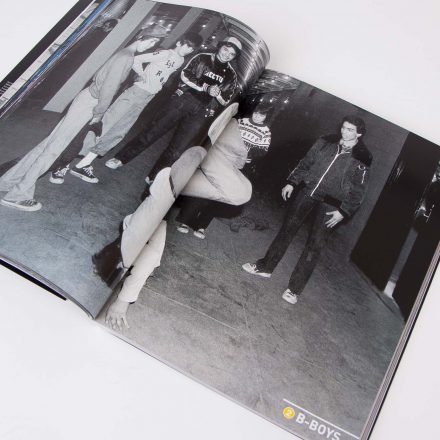
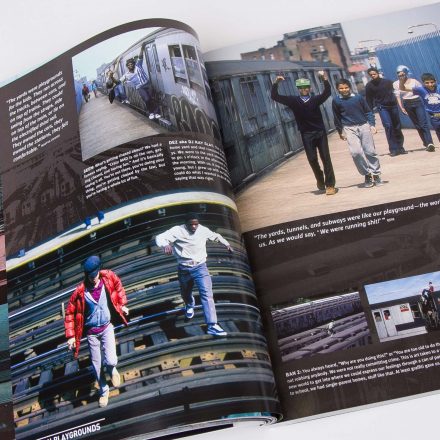
Hip Hop Files: Photographs 1979-1984
Martha Cooper

Creative process
The first question that you may have been talking about is what is a process.
What is someone’s creative process. This can look very different from one to another.
There is a large diversity of processes, different tools that you can use to uncover how you are trying to explain the concept.
For me, for example, regarding my internal inquiry, when I was sitting down to make that piece said above, about my family dynamics and sisters, it did not come out very obvious of how we would stand in a certain way then move in a certain way immediately.
It took a lot of internal reflection, and internal research. This internal research could be a very emotional thing. I asked myself how I would feel in a certain environment with my sisters, what kind of emotions come up, and how do they feel physically.
When I was making a dance which is very intense, very anxiety endorsing, I asked myself where do those feelings live in my body, and what do they make my body do?
Do I cave in a little, or is it something that make me feel that I am big and taking up space?
I really take time to do my internal work.
I use journaling a lot.
Once I did a spoken word and dance piece about collective power for people of color of the United States. I wrote down how does it make me feel internally for me, and for my own identity, and how can I pin point those emotions that I was feeling internally, how does this idea make me feel internally.

For external inquiry, it is to go out and test all of those emotions in a very physical sense.
For example, If I play with a concept that makes me angry, I would move in a space as wildly as I can, while filming this process with a camera.
It is way to find very genuine way of moving, when I feel genuine with the emotion I am trying to perceive. I would just thrash my body back and forth for an hour, to see where that is getting me, how it feels physically, and then takes bits and pieces of that, to become a part of my dance piece.
If one could start internally, then have that move outward, it would be beneficial, with a note that this process could be different from one person to another.
I think journaling is great tool. Before I start to create a piece, I have a list of questions I would ask myself, giving me the space to improvise.

Dance research as a creative method
– Harnessing research as a tool for making better work
What is a process?
- Diversity of processes, different tools
- Internal vs. External creative inquiry
- Kinesthetic empathy
What is kinesthetic empathy?
Spectators of dance experience kinesthetic empathy when, even while sitting still, they feel they are participating in the movements they observe, and experience related feelings and ideas.
There has been a lot of studies about kinesthetic empathy for audiences.
What you would do as a choreographer, is to channel that kinesthetic empathy as best you can.
That means when an audience member is sitting in a chair, and your work is actually creating a sense of kinesthetic empathy.
Since the body is something we have, the audience member watching you dance, may actually feeling that dance work spoke to them.
They may describe that they are feeling it, and they have a reaction in their body. Seeing someone moves that way, their bodies wonder what it feel like for them if they move like that. It is very immediately relatable because everyone uses their bodies to a certain degree.
So using kinesthetic empathy as a tool, thinking about how you are related to an audience, to try to evoke a reaction from an audience, to try to get them to feel the way I am feeling, is interesting.

A double pendulum and the trace of its chaotic movement
Kensho Miyoshi
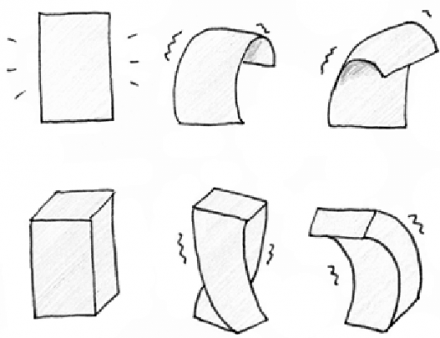
Transformation of 3D objects:
Different forms have different ways
of accumulating and releasing physical tension
Kensho Miyoshi
I am going to play a clip from a choreographer who would explain what dance research means to him.
What he was talking was “Creative Response Theory”. He was using this tool of feedback that has been developed as his part of choreographic process. He created a space where he can perform his work in a very informal way and have a set of questions what people can ask him. This gives him the sort of feedback he really needs to develop his piece.
“We all use our body on a daily basis, and yet few of us think about our physicality the way Wayne McGregor does. He demonstrates how a choreographer communicates ideas to an audience, working with two dancers to build phrases of dance, live and unscripted.”
— Wayne McGregor
Title: A Choreographer’s Creative Process in Real Time
by Wayne McGregor
TED Talks
2012
Movement Scores
Movement scores are helpful when you want to start to dig out what you want to do physically for your dance, or for your movement.
Movement scores can be seen as props for dancing that are designed intentionally to be vague therefore you can go wherever you please with them.
To know more, click here.
“What is the work the ‘score’ in the creation of an improvised group dance? where scores are verbal propositions, usually relating to physical, bodily or movement notions, rather than being narrative or psychological, such as tangling and untangling or the noticing of being subject to gravity.”
— Olivia Millard
Improvisation / Scores
Improvisation and score making is an important tool and approach to creating and performing. below are some ideas to explore from a range of disciplines.
An Improvisation and score example:
- You can walk, in any direction, or you can stand.
- If a stable, lightweight chair is available, you can sit or stand on it.
- You can stand on the bed -or walk across it, without breaking stride.
- The same goes for couch, table and overstuffed pieces of furniture.
- You might jostle a piece of furniture.
- You might wrap your body around that furniture or pick up and put down objects or, say, wash your hands — never too often now — all while maintaining a steady walking rhythm, which, the mainstay of the whole enterprise.
- Once you stand still, it’s over
Although the score, like much postmodern dance, doesn’t require any musical accompaniment, you can respond to noises in your environment. You can decide on several verbal cues from the radio or TV to put yourself into motion again. The high frequency of such cues should prevent extended stalling.

Key Questions
Finding your process:
- What am I trying to communicate?
- Are there certain feelings or emotions I need to channel or evoke?
- How do I be clear but not cliched?
- What kinds of movement explorations will allow me to dance in new, genuine ways?
These are the key questions finding your process.
You have answered the first question with briefly explaining your concepts.
The second questions are about the internal and external inquiry.
The third question is a difficult one. A lot of you have very specific concept that you are working with.
How do you make that intention very clear, without using a lot of cliché movements, almost making it too easy to your audiences, or too literal to your audiences?
For example, I am creating a piece about mental health. I am making it something that is very internal and antagonizing. And I play a soundtrack that literally says what mental health is while I grab my head and moving back and forth.
Therefore, the audiences will not have to guess what this work is about. I have been very clear, but perhaps it is too cliché that I feel like I have already seen a lot of pieces that exactly do that.
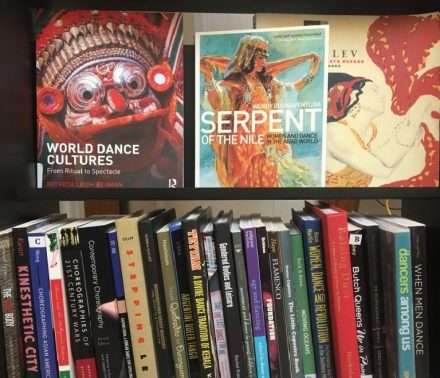
Collection of books and films related to dance
The Lilly Library
Indiana University, Bloomington, United States
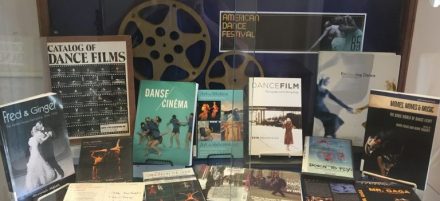
Collection of books and films related to dance
The Lilly Library
Indiana University, Bloomington, United States
It is not necessarily about reinventing something.
Anything you are going to create is in a way something new. It is a matter of trying to make sure that you are using your process trying to find movement that is genuine rather than making something because you feel that is the easiest for the audiences, or that is what the audiences would want to see. This leads to the last question.
I think the word “genuine” is very important. Because a lot of time, we make our worst works, when we are thinking of the audiences, maybe, too much. So making works that are genuine to you, and how you are feeling, by using these processes, would be more interesting to the audiences.
“Choreography is creation, design, and structure of movement on/with physical bodies. Choreographic methods as a process of practice-based research are used as qualitative data. It is argued that choreographic practices and performances are the methods and embodiment of the choreographer and that dancers as inseparable methods and material.”
— Angela Pickard
The Importance of Dance Research
This is the last few things I would talk about before moving on to answering questions.
I have some questions here.
How do we look at dance as a really tool of information?
No dance develops independently? What is the history of Dabke, a native Levantine folk dance, in Jordan?
Where did it come from, what does it mean and how is it used?
I have been focusing on Hip-hop. Hip-hop started in New York city. And now it has been used all around the world in very distinctive communities. Hip-hop in Brazil is very different from Hip-hop in Japan.
What does this mean?

Judson Dance Theater The Work Is Never Done
Designed at The Museum of Modern
ArtPhotograph by Peter Butler
Sep 16, 2018 – Feb 3, 2019

Judson Dance Theater The Work Is Never Done
Designed at The Museum of Modern
ArtPhotograph by Peter Butler
Sep 16, 2018 – Feb 3, 2019
When I look at the place of dance and its viability in the given culture, I ask myself how is this dance being used, are people really engaged in it or is it a small group.
Movement analysis is a great tool. Imagine you attend a literature class where you analyze a written work, you would probably analyze every word, every sentence, the phrase of speech. It is very similar when we analyze movement.
When you analyze every single tiny aspect of dance the same way you would analyze a written work, movement analysis could be used as a source of information.
Even in where I am, UCLA, dance is still underestimated as an academic filed.
A lot times dance is underestimated as a tool for scholarship, while dance research has huge following as many people dedicated their whole lives to dance research, using dance as a tool to talk about a lot of much bigger things.
Dance Research as scholarship
- The historical, social, economic, and political context in which the dance was developed and is currently employed
- The place of dance and its viability in the given culture
- Movement analysis
- Still underestimated as an academic field

When you see a dance work, these some helpful questions you could as yourselves. It is good to keep asking why, why is this dance made? This helps you to analyze a dance, to better understand what it means.
- Which specific movements allowed me to understand what the choreographer was trying to “say”?
- Did I have an emotional reaction to the dance?
- What did the dancers’ movements remind me of?
- How is this dance positioned socially, politically, historically, etc.?
- What shapes and patterns did the bodies make?
- What did the costumes, music, lighting portray?
- How does this dance reflect the personal history of the choreographer or the culture of a particular country or culture?
- Why did the choreographer make this dance?

This is the last thing I want to emphasize.
Doing more intellectual dance research could be very valuable to your piece.
Having a better understanding of the history of your concept, have any artist made this kind of work before, or what kind of text or books have been written about what I am trying to dance, is important.
The more research you do before hand, the beneficial to your piece. It would have great influence on your piece. It is likely to push your piece to a more intentional direction.
It is worthy taking the time to do a movement analysis of another piece that is similar to yours and understand whether it communicated the emotions of this piece well.
If you could combine this with your creative method, such as your internal reflections and external improvisations, you would notice that you are informed by the research that you have done.
The main takeaway is that dance research could be an incredible tool not only internally for you as a dancer, and there is a whole house of dance scholarship that is looking for dance researchers being the forefront to use dance as a way to understand our communities, to understand ourselves, to understand how humans work.
All of these can work together for your individual projects

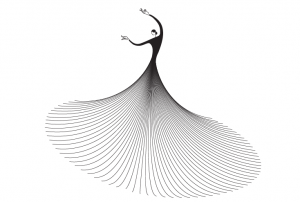
Interaction between Participants and Bella Stenvall
I would love to hear each of your names and what concept you are working with. I know that you have your initial choreographic concept.

Rana Madanat (Participant)
My name is Rana.
I heard you said that you were in Jordan but I did not get the chance to meet you. Hopefully one day we would meet each other.
I am a Hip-hop dancer. I have been dancing for approximately 12 years.
I have been teaching dance for 10 years. I have been trying to figure out my dance career without any support from university, from any formal education.
My concept is about having all female dancers, tell the stories of all the struggles that female, especially female dance artists have to go through, in Jordan, and in the region. We will talk about certain taboos, talk about the disrespect a lot of people have experienced.
I personally, have a lot of experiences. I don’t think I have enough time here to talk about all my personal stories. My aim is to illustrate how I was treated, how a lot of women were treated, in this region, through creating a choreographic work.
Bella Stenvall
That is wonderful. Thank you so much for sharing.

Sana Ghalieh (Participant)
My name is Sana.
I am drama teacher, and a cultural facilitator. I teach students, and teachers.
The idea I am working on is based on a children’s story, including the four elements of “air, earth, water and fire”, with the plot being “time”. This children’s story is called “wild child”.
The story starts with a wild child living in a forest. A friend of the child who lives in the civilized world, invites the child to live with them. We wonder whether the wild child would accept the offer.
It is a story about change and adaptation.
Bella Stenvall
That sounds amazing.



Jamal Suleiman (Participant)
How are you?
We have met last time and you have seen my performance at house of dreaming when you were in Amman.
The project I have in mind is called “9 to 5 box”.
It is a development of the previous performance I created last year, using a conceptual improvisation.
Actually, I was very much encouraged last time in the house of dreaming to perform the solo which led to this project.
I have a storyline. I would tell a person this story, perhaps in the form of an audition. The other person, could use their movements, to deliver their understanding of the story.
Bella Stenvall
It is good to see you. That sounds amazing.

Abd Al Nabulsi (Participant)
My name is Abd Al Nabulsi, AKA DJ Cypher.
I am a DJ, and a music producer.
I am fascinated by how our feelings, and emotions effects people, effects their actions.
My idea is to create a music video which explores some all-time issues, or problems, effecting human lives, focusing on how feelings and emotions control us.
Bella Stenvall
That sounds like very good project. I love hearing all of these. These all sound exciting.
Do you have any idea how you are going to apply some of the ideas I shared to what you are working on?
Abd Al Nabulsi (Participant)
My work is about emotion. I consider doing more research and try to find out why people connect certain movement to certain emotion. And I would also like find out whether there is alternative movement associate to a specific emotion.



Akka Hamdan (Participant)
My name is Akka.
I am a folk dancer.
I came here with my folk dance collective, Majdal.
There are seven members of Majdal here in the creation camp, working on a concept together.
Our idea is about our observation that people used to be more independent when it comes to agriculture, and sustaining themselves.
We also think agriculture played a more important role in the lives of our fathers and forefathers.
As a folk dance collective, we’d like to explore this idea of independence, people in relation to land, and the importance of agriculture in our region, with Dabke, a native Levantine folk dance.
Bella Stenvall
That sounds amazing.

Mohammad Qattan (Participant)
My name is Qattan. I am currently studying visual art at university of Jordan.
My project is about my objection of post-modernistic arts.
Bella Stenvall
It is good see people that I know. I did not expect that. This is awesome.



Waseem Albado (Participant)
My name is Waseem.
There are three of us, working on creating an organization which focuses on theatre, dance, and puppet making. We had been taking workshops in dance and theatre.
Currently we are developing our organizational files, including our vision, our mission, etc.
Our organization is going to be called “Art Vision”.
Bella Stenvall
“That is great! Beautiful!

Hasan Alresheq (Participant)
My name is Hasan.
I am a dancer, and a parkour practitioner.
My idea is to combine different dance styles, including popping, Hip-hop, and folk dance, possibly parkour to create a piece. I have thinking to create a fusion style music as well. I wonder how can I create such fusion style, maintaining a certain level of professionalism.
Bella Stenvall
Very cool!


My feedback
A lot of you have very specific concept that you are working with.
How do you make that intention very clear, without using a lot of cliché movements, almost making it too easy to your audiences, or too literal to your audiences?
For example, I am creating a piece about mental health.
I am making it something that is very internal and antagonizing. And I play a soundtrack that literally says what mental health is while I grab my head and moving back and forth.
Therefore, the audiences will not have to guess what this work is about. I have been very clear, but perhaps it is too cliché that I feel like I have already seen a lot of pieces that exactly do that.

Recommend exercises
I have a task which I have gotten a lot out of even since I have been using these processes is a combination of “stillness”, “writing”, and “non-stop-movement”.
You set a timer.
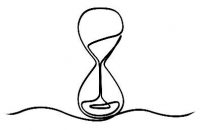
You start with 5 minutes at a time.
So the order goes writing, dancing, and stillness.
You have a journal, a book, or a piece of paper and you write non-stop for 5 minutes.
It is not about how good it is. All you need to do is to write about your idea until the timer goes off.
Then you put your pen down and start to dance, for 5 minutes, non-stop.
Don’t stop moving in these 5 minutes.
It doesn’t matter whether it is good or not. All you need to do is keeping moving in what you are writing about for 5 minutes.
Then the timer goes off, and you stop.
You close your eyes in stillness, kind of like a meditation, for 5 minutes.
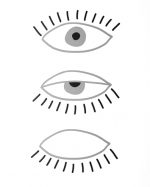
Then you repeat this process for 3 minutes, then 2 minutes, then 1 minute, then 30 seconds
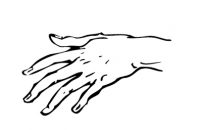
What this exercise does is that it helps with your writer’s block.
It is very often when you choreograph, you may make some progress and then you feel that there is nothing new coming.
When you feel that there is nothing refreshing, exercises like this will force you not getting into your head as much.
If you do it regularly, and look at the videos of yourself dancing, you may notice moves that are keeping coming up.
As you start to build your choreography, you may start from the reoccurring moves.
This exercise make you pay more attention to your body keeps doing naturally in response to putting yourself in these situations.
Making it a daily practice, is very helpful.
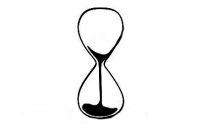
Another exercise I usually do is to create a very charged space.
For example, if I was to explore the idea of love, I would put myself in a space where I would be constant emerged in the music, images, or sound that would remind me of that feeling.
I would oversaturate myself of things that would trigger that emotion then I would try to move non-stop.
I will put a camera up and pay no attention to it.
Because if we start to dance for the camera, we’d move less genuinely. If you could get yourself in that zone, just keep moving, by moving instinctually, you would find a way to get stuffs out of you.

This session starts at 6:00 pm (Friday), 18th, September, 2020.
Who is the speaker?
Who is the speaker?
Email: bellastenvall@gmail.com
Bella Stenvall (USD) is a rising senior in the World Arts and Cultures/Dance program University of California, Los Angeles.
She has been performing contemporary, ballet, jazz, and post-modern styles around California since she was 4 years old. She has traveled around the world learning salsa, flamenco, and post-modern techniques.
Her journey in choreography began when she was 16, when she choreographed a piece for the Civic Ballet’s “Infusion” at the San Luis Obispo Spanos Theater. Since then, Bella has choreographed a wide variety of solos, site-specific, and large ensemble modern pieces that have been performed for the wider UCLA community and beyond.
Her studies have allowed her to use improvisational methods and scores to better understand how choreography can go far beyond set steps and better communicate internal emotions and images. She lived in Amman from August to December of 2019 and did preliminary research on the development of hip hop communities in the city.
Bella is passionate about arts community organizing and using choreography as the means for intimate storytelling.

The Manual Content
- All
- Abd Al Hadi Abunahleh
- Bella Stenvall
- Enrico Paglialunga
- Simea Cavelti
- Xiaoman Ren













